Opioid Itching Decision Tool
How to tell if your itching is from opioids or an allergy
This tool helps you distinguish opioid-induced itching from allergic reactions and provides evidence-based treatment recommendations. Based on the article content, opioid-induced itching is NOT caused by histamine and requires different treatment than allergic reactions.
When did the itching begin?
Itching from opioids isn’t just annoying-it can be unbearable. You’re in pain, you take morphine or another opioid to feel better, and then your skin starts crawling. No rash. No swelling. Just an intense, uncontrollable urge to scratch your face, chest, or arms. It happens fast-sometimes within minutes. And it’s not rare. In fact, up to 100% of people getting spinal morphine for childbirth or surgery will experience it. Yet most doctors still reach for antihistamines like Benadryl, which barely help. Why? Because the real cause isn’t what we were taught.
It’s Not Just Histamine-And That’s Why Antihistamines Fail
For decades, doctors blamed histamine. The idea was simple: opioids trigger mast cells in the skin to dump histamine, just like an allergic reaction. That’s why diphenhydramine (Benadryl) became the go-to fix. But here’s the problem: it only works for about 20-30% of patients. If histamine were the main driver, it would work far more often. Research from 2018 in Nature Scientific Reports turned this idea upside down. Scientists found that opioids like morphine activate nerve fibers connected to TRPV1 receptors-those are the same nerves that respond to capsaicin (the burn in chili peppers). When these nerves fire, they send an itch signal straight to the brain. And here’s the kicker: blocking histamine doesn’t stop it. But blocking the opioid receptors in the skin? That stops the itch dead. Even more telling: when researchers used capsaicin to temporarily desensitize those nerves, the opioid itch disappeared. That’s not something histamine can explain. This means most opioid-induced itching has nothing to do with allergies or histamine. It’s a direct neural pathway.Which Opioids Cause the Most Itching?
Not all opioids are equal when it comes to itching. The risk depends on how the drug gets into your body.- Intrathecal (spinal) morphine: 70-100% of patients get it. This is why it’s so common after C-sections.
- Intravenous (IV) morphine: 30-50% of patients. Often hits within 15-30 minutes.
- Oral opioids: Only 10-30%. Much less likely to cause itching.
What Actually Works to Stop Opioid Itching
Forget Benadryl. The real solutions target the source: the opioid receptors themselves.1. Naloxone (Low-Dose IV Infusion)
Naloxone is the opioid overdose reversal drug. But at tiny doses-just 0.25 mcg/kg/hour-it can block the itch pathway without touching pain relief. Studies show it cuts itching by 60-80%. It’s safe, fast, and doesn’t make you drowsy. Hospitals that use it as a preventive drip during spinal morphine see far fewer rescue meds needed.2. Nalbuphine (5-10 mg IV)
This one’s a game-changer. Nalbuphine is a mixed opioid: it blocks mu receptors (which cause itching) while activating kappa receptors (which suppress itch). It works in under 5 minutes. In cesarean patients, it dropped itch scores from 8.2 to 2.1 on a 10-point scale. Nurses in post-op units swear by it. One nurse on AllNurses.com said, “Nalbuphine 2mg IV is our go-to-it works within 5 minutes without waking patients, unlike diphenhydramine which causes 45 minutes of drowsiness.”3. Butorphanol (1-2 mg IV)
Similar to nalbuphine, butorphanol is another kappa agonist/mu antagonist. It’s effective, especially in obstetric settings. It doesn’t cause sedation like antihistamines and doesn’t reverse pain control.4. IV Lidocaine (1.5 mg/kg)
A surprising option. Lidocaine blocks nerve signals, including those causing itch. Studies show it works in 70% of cases. But it requires monitoring-too much can affect heart rhythm. Used mostly in controlled settings like ORs or ICUs.5. CR845 (Difelikefalin) - The Future
This is a new drug approved for kidney disease itching but now being tested for opioid-induced pruritus. It’s a peripherally acting kappa agonist, meaning it doesn’t cross the blood-brain barrier. That’s huge: it stops itch without affecting pain relief or causing dizziness. Phase II trials in 2023 showed 65% reduction in itching. It could become standard within five years.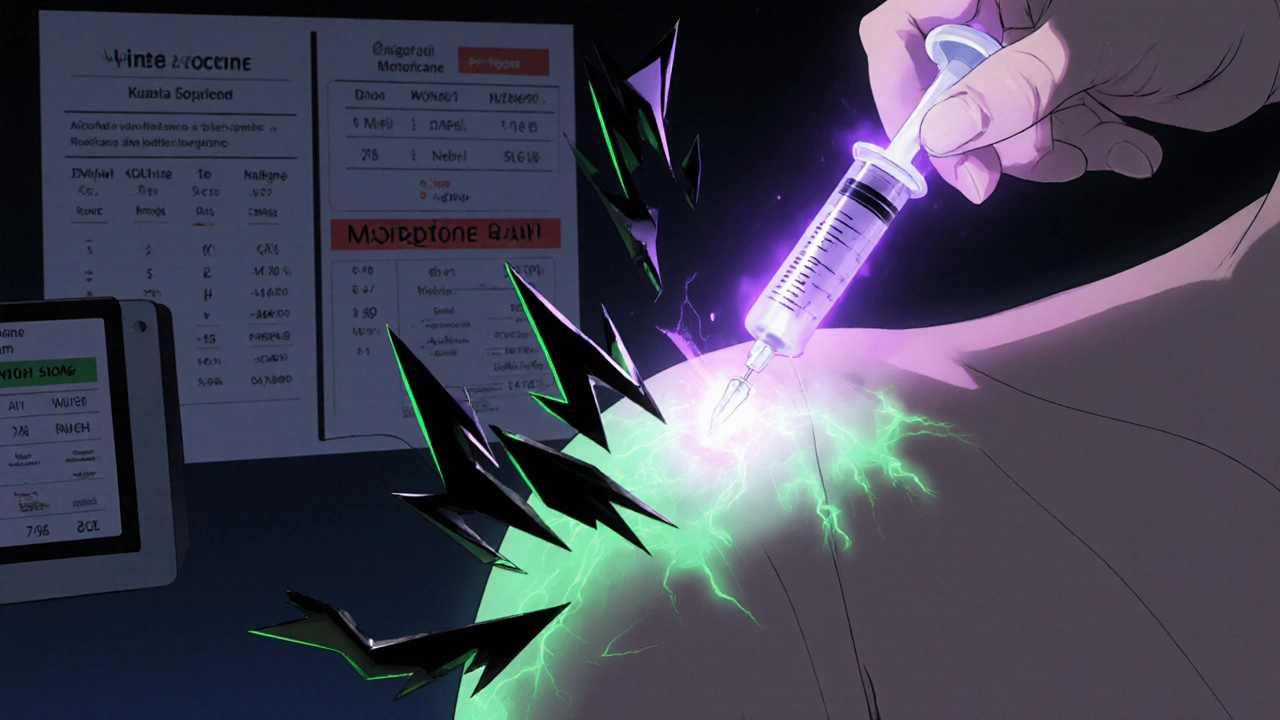
Why Misdiagnosis Is Common-and Dangerous
Too many clinicians mistake opioid itching for an allergic reaction. They see redness, hear “itchy,” and think anaphylaxis. That’s dangerous. Giving epinephrine for a non-allergic itch is unnecessary and risky. Studies show 32% of cases are misdiagnosed this way. Here’s how to tell the difference:- Opioid itching: Starts 10-30 minutes after dose. Focused on face, chest, upper arms. No hives, no low blood pressure, no wheezing.
- Allergic reaction: Happens faster. Includes hives, swelling, trouble breathing, drop in blood pressure.
Real People, Real Impact
This isn’t just a medical curiosity. It changes lives. Mothers after C-sections report itching so bad they can’t hold their newborns. One Reddit user wrote: “I wanted to bond with my baby, but I was scratching my face raw. I felt like I was losing my mind.” In a 2023 survey of postpartum patients, 78% said the itching severely disrupted bonding and sleep. Chronic pain patients say they quit opioids because of the itching. One user on ChronicPainSupport.org said: “I’d rather have pain than feel like fire ants are crawling under my skin 24/7.” That’s not exaggeration. For some, the itch is worse than the pain.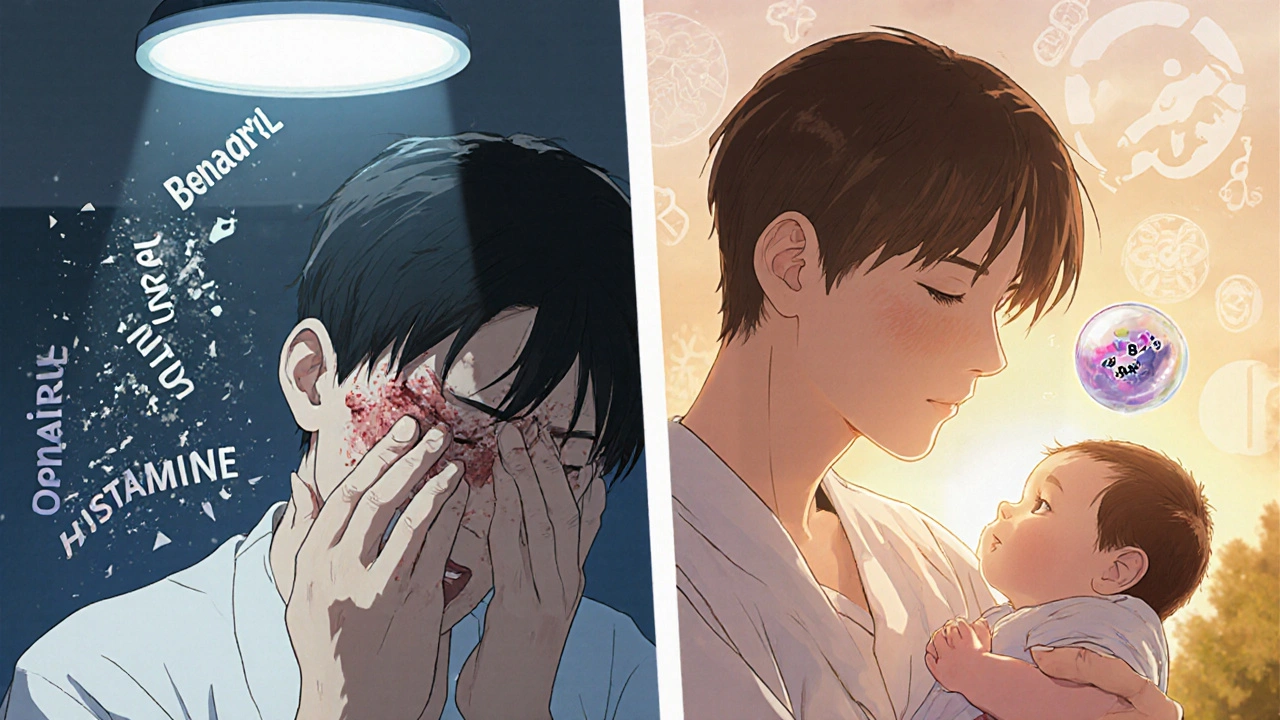
What Hospitals Are Doing Right
Forward-thinking institutions have created protocols. The University of Copenhagen’s “Pruritus First Response Algorithm” trains staff to recognize the signs, avoid antihistamines as first-line, and use nalbuphine or low-dose naloxone immediately. The result? A 40% drop in rescue medication use. The American Society of Anesthesiologists released a free toolkit in late 2022 with dosing calculators for naloxone infusions that maintain pain control while cutting itching by 75%. Yet only 37% of U.S. hospitals have formal guidelines. Academic centers? 68%. The gap is huge.What You Should Know as a Patient
If you’re scheduled for surgery or a C-section and will get spinal or IV opioids:- Ask: “Will I get itching? What will you give me if I do?”
- Don’t assume Benadryl is the answer. Ask about nalbuphine or low-dose naloxone.
- If you start itching, tell your nurse immediately. Timing matters-treatment works best within 5-10 minutes.
- Don’t confuse this with an allergy. No rash? No swelling? Then it’s likely opioid-induced.
The Bottom Line
Opioid-induced itching isn’t an allergy. It’s a direct effect of how opioids interact with your nervous system. Histamine plays a small role in some cases, but the main culprit is neural activation via TRPV1-expressing nerves. That’s why antihistamines fail. The best treatments don’t fight histamine-they block the opioid itch signal at its source. Nalbuphine, low-dose naloxone, and butorphanol are proven, fast, and safe. New drugs like CR845 are coming that could make this side effect a thing of the past. This isn’t just about comfort. It’s about patient safety, recovery, and quality of life. If you’re on opioids and itching, you don’t have to suffer. There’s a better way-and it’s already in the evidence.Why doesn’t Benadryl work for opioid itching?
Benadryl targets histamine, but opioid-induced itching is mostly caused by direct activation of nerve fibers in the skin and spinal cord-not histamine release. Studies show antihistamines only help 20-30% of patients, meaning the main pathway is nerve-based. Using Benadryl delays effective treatment and causes unnecessary drowsiness.
Can opioid itching be an allergic reaction?
Rarely. True allergic reactions to opioids include hives, swelling, low blood pressure, or trouble breathing. Opioid-induced itching usually appears 10-30 minutes after dosing, is focused on the face and upper body, and has no other allergy signs. Misdiagnosing it as an allergy can lead to unnecessary epinephrine use, which carries risks.
Which opioid causes the least itching?
Fentanyl and oxycodone cause significantly less itching than morphine or codeine. Oral opioids have lower rates than IV or spinal forms. If itching is a major concern, talk to your doctor about switching to a lower-risk opioid-especially if you’re on long-term therapy.
Is nalbuphine safe if I’m already on opioids for pain?
Yes, when used correctly. Nalbuphine blocks the itch-causing mu receptors while activating kappa receptors that reduce itching. At standard doses (5-10 mg IV), it doesn’t reverse pain relief. In fact, it’s commonly used during C-sections alongside morphine to control itching without affecting pain control.
How soon should treatment start after itching begins?
Within 5-10 minutes. Studies show early intervention with nalbuphine or low-dose naloxone leads to much faster relief and prevents the itch from becoming severe. Delaying treatment makes it harder to control and increases the chance of needing multiple doses.
Will I always get itching if I use morphine?
No. The risk depends on how you get the drug. With IV morphine, about 30-50% of people get itching. With oral morphine, it’s only 10-30%. Spinal morphine has the highest rate-70-100%. But even then, effective treatments exist. You don’t have to accept it as inevitable.
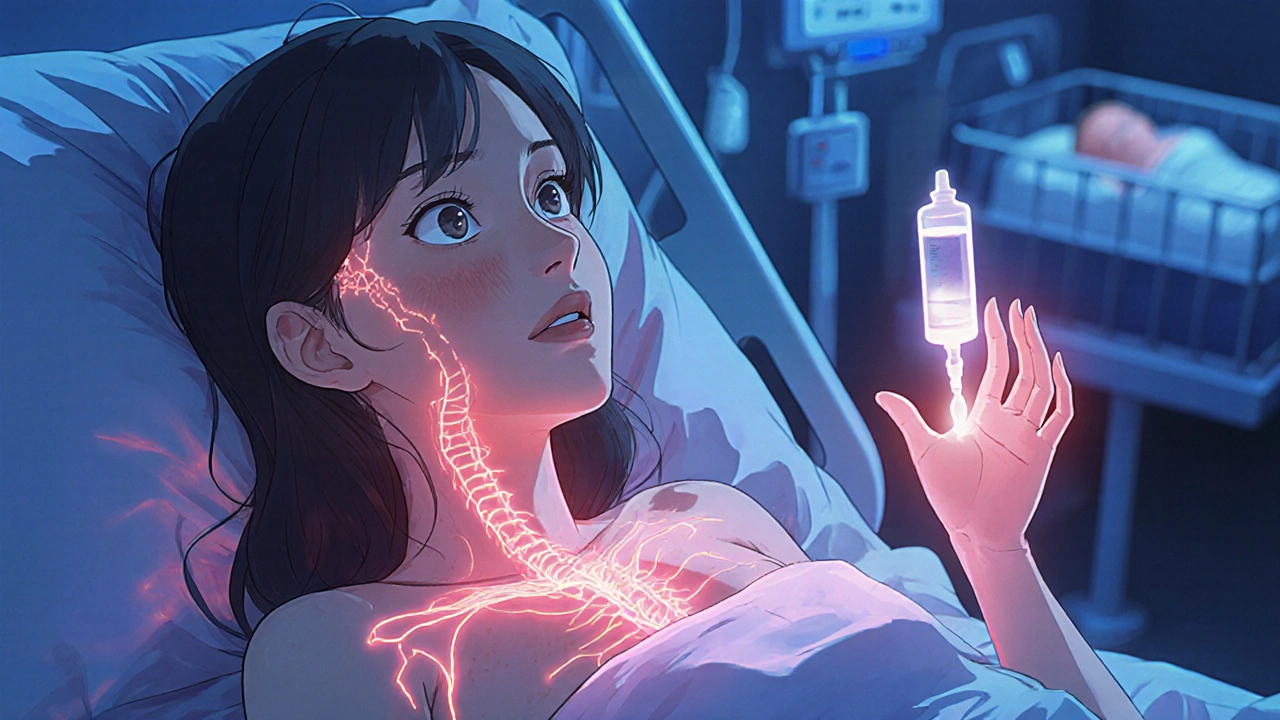

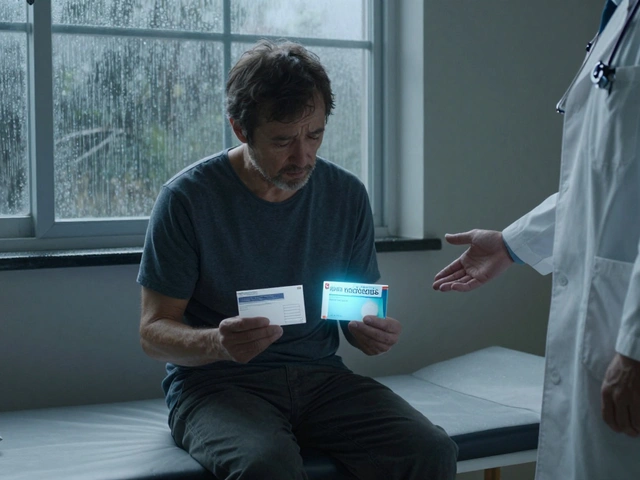
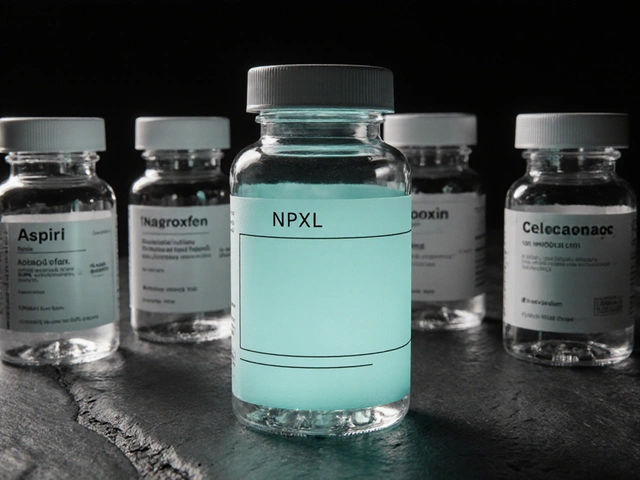
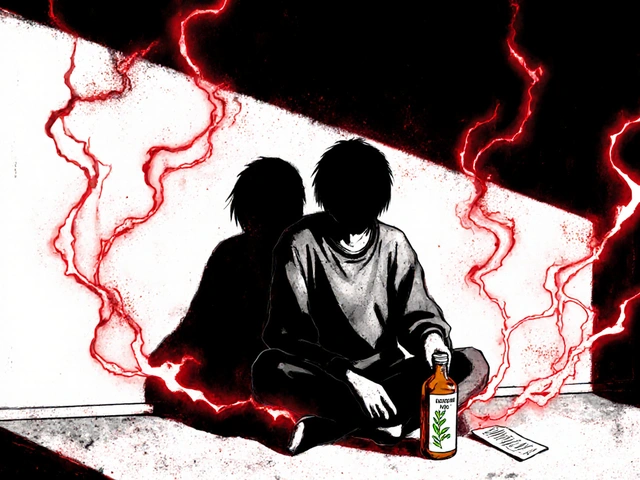

Shanna Talley
October 31, 2025 at 20:38
This is one of those posts that makes you feel seen. I had spinal morphine after my C-section and thought I was going crazy scratching my face raw while trying to hold my baby. No one told me this was normal. Thank you for explaining it’s not an allergy - it’s the nerves. I wish I’d known about nalbuphine back then.